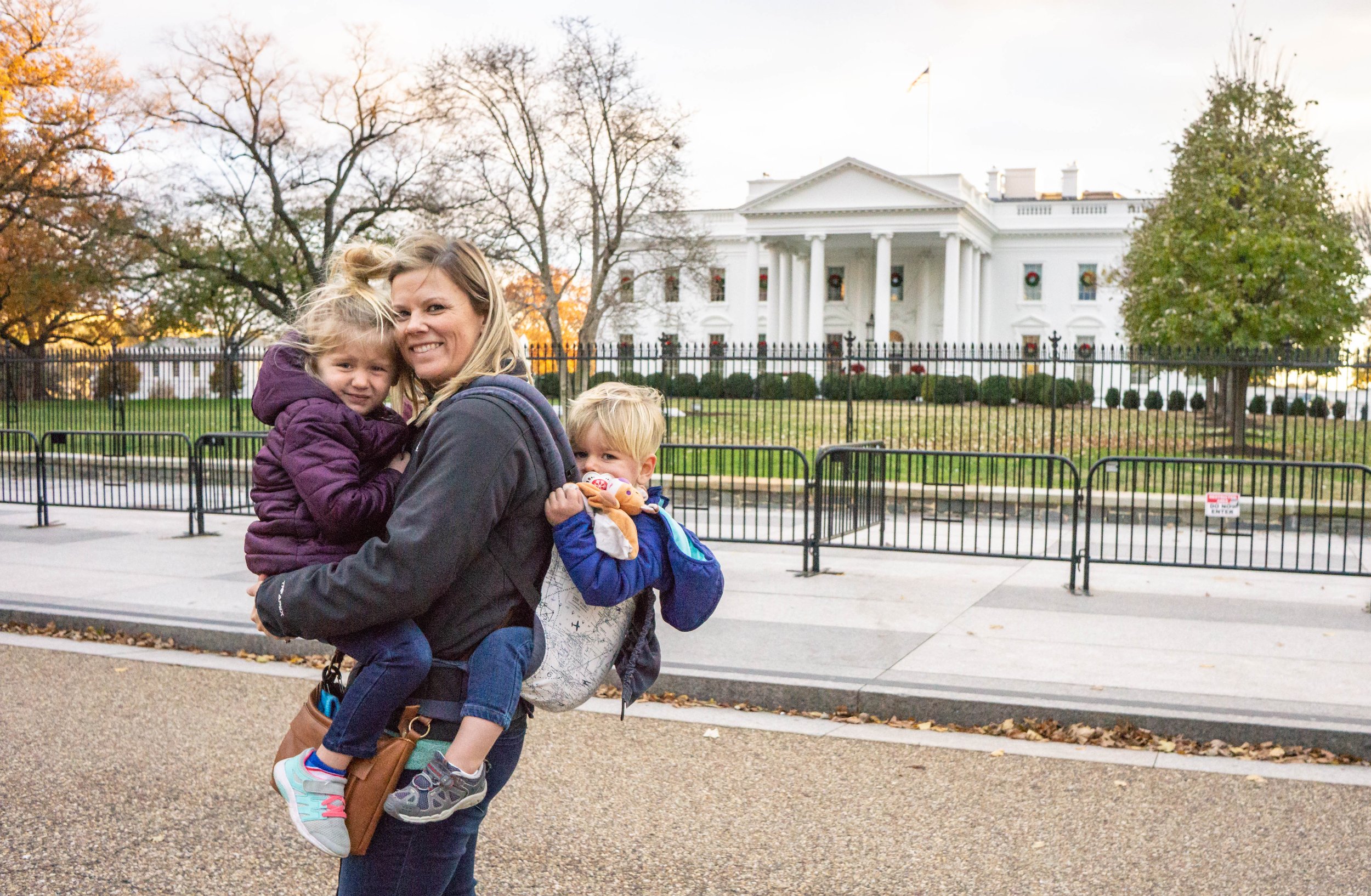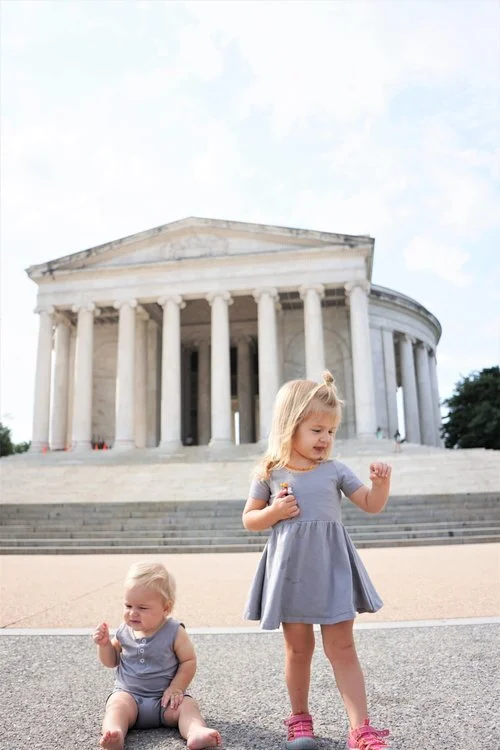How to Navigate the NYC Subway with a Stroller
/If you’re headed to the Big Apple, but are nervous about using the Subway with a stroller, this guide to How to Navigate the NYC Subway with a Stroller is for you! There are 472 Subway Stations in New York City, but only 117 are fully accessible with elevator service. This guide will help you make a plan on your planned routes through New York city with kids!
we visited the new york transit museum and it was incredible to see all of the old subway cars
New York City's subway system is one of the most used and well connected public transportation options in the United States. However, for parents with young children and strollers, navigating the subway can seem like a daunting task. In this comprehensive guide, I'll walk you through everything you need to know to make your NYC subway journey with a stroller as smooth as possible. From accessing the subway with a stroller to using helpful apps and exploring alternative transportation options, I’ve got you covered. As a mom who has traversed New York city by herself with 2 toddlers and with a baby, I’ve learned a few things along the way.
Check my Instagram Highlight for more photos and videos from our time in New York City with Kids
This site contains affiliate links to products. We may receive a commission for purchases made through these links.
A double stroller on the NYC subway - this was very challenging to lug through the subway system
Table of Contents
Accessing the New York City Subway with a Stroller
Accessible Stations
Elevators and Escalators
Accessible Boarding Areas
Fold Your Stroller
Fares
2. How to Enter the Subway with a Stroller in New York City
3. Useful Apps for Finding Accessible Subways in NYC
4. Alternative Transportation Options
5. Tips for Riding the NYC Subway with a Baby
5. Additional Resources for Parents Traveling with Strollers in NYC
1.) Accessing the NYC Subway with a Stroller
Before you embark on your subway adventure with a stroller, it's essential to be aware of subway station accessibility and the rules regarding stroller use.
Accessible Stations: There are only 117 wheelchair or stroller accessible Subway Stations in New York City. Major hubs like Times Square and Grand Central Terminal typically have accessible entrances. Use the suggested apps to think through your route before you start.
Elevators and Escalators: Stations with elevator access are your best bet when traveling with a stroller. Be sure to familiarize yourself with the location of elevators and escalators at your chosen station to avoid unnecessary stair climbing.
Accessible Boarding Area: Some stations have an accessible boarding area where people with disabilities can access the Subway easier. However, strollers are allowed to enter here as long as priority is given to customers with disabilities.
Fold Your Stroller: MTA rules require that you fold your stroller before entering the subway car. It's a good practice to do this on the platform to avoid delaying other passengers. While this is a requirement, I have never been asked to do it and I only have if the car is very crowded.
Fares: “Up to three children 44 inches tall and under ride for free on subways and local buses when accompanied by a fare paying adult. Infants (under two years of age) ride express buses free if the child sits on the lap of the accompanying adult” - CHILD FARES
READ NEXT: The Best of NYC At Christmas with Kids
with two toddlers, a double stroller too big but I still needed space for 2. my daughter happily rode around nyc in the botom basket of this old graco stroller.
2) How to Enter the Subway Station with A Stroller
This actually slowed us down a few times, so it’s important to know because a stroller will not fit through the standard turnstiles at the entrance points to the Subway Systems. Instead, you’re going to have to use the accessible door.
First - get our your metro card and find the window where there is an attendant and let them know you are going to want to enter with a stroller. I have found that just standing at the accessible door and holding up my metro card for them to see works just as well.
Second - The attendant will likely tell you to swim your card at the nearest turnstile, but you won’t go through that. They will unlock the accessible door for you to move through. (Accessible doors can also be the emergency exit door)
If there is no attendant: You can usually ask a person who is exiting the Subway to open the door for you to get through. If this happens, just swipe your card at the nearest turnstile and go through the exit door.
READ NEXT: The Best of New York City with Kids
Having a newborn and a toddler meand I could not fold my stoller, so I had to ride with it open and it took up so much space!
3) Useful Apps for Subway Accessibility
Technology can be a lifesaver when navigating the NYC subway system with a stroller. Here are some apps that can help you find accessible stations and plan your journey:
MYmta: The official MTA app provides real-time information on subway schedules, station accessibility, and elevator status. It's a must-have for any subway traveler, especially those with strollers.
Here you can see which stops have elevators by borough: MTA ACCESSIBILITY
Here you can see which elevators are out of service: MTA SERVICE UPDATE
Citymapper: This user-friendly app offers step-by-step directions for navigating the NYC subway system, including accessibility information and real-time updates.
Moovit: Moovit provides detailed transit information, including subway accessibility and service alerts. It also offers a 'live directions' feature that guides you throughout your journey.
Rampd: An app created by a mother who needed easier access to the Subway. You can download it on Android or iOS.
Wheely NYC: It shows you how to navigate NYC with a wheelchair or stroller and includes all the accessible subway information and street view images!
riding the subway with a baby carrier can be easier than lugging a stroller. We wore him and folded our stroller.
NYC with Kids Guide
This is one of my favorite guides to NYC! What’s Included in the Guide?
- 40 detailed pages
- Day-by-day instructions for one week in NYC
- Daily schedules
- An Interactive Downloadable Map
- Pro Tips
- Tried and tested tours and museums
- Packing List
- Trip Checklist
4) Alternative Transportation Options when Traveling with A Stroller in NYC
4. Alternative Transportation Options
While the NYC subway is a convenient mode of transportation, it may not always be the most practical choice for parents with strollers. Here are some alternative options to consider:
The kids riding the NYC bus with our stroller folded next to them!
Buses: NYC buses are generally stroller-friendly, with designated areas for strollers. They also kneel to the curb, making boarding easier. NYC is rolling out an Open Stroller Pilot program to allow parents to leave their strollers open on the buses! I have taken the bus with my kids when I didn’t have the mental space for navigating the subway. However, expect the bus to take a lot longer!
Ride-Sharing Services: Services like Uber and Lyft are readily available in NYC and can be a convenient way to get around, especially when traveling with a stroller. In the city, you can request Ubers with child restraints available.
Walking: Many of NYC's attractions are within walking distance of each other. Plan your itinerary to include walking tours and explore the city at a leisurely pace.
Biking: If you're comfortable cycling, you can rent a Citi Bike at various locations throughout the city. Some models are equipped with child seats.
strollers take up a lot of room on the subway. fold them if it is crowded, but if there are few people we found it didn’t bother anyone to leave it open.
5) Tips for Riding the NYC Subway with a Baby
Traveling with a baby adds an extra layer of complexity to your subway journey. Here are some specific tips to make your trip with a stroller and a baby more manageable:
Our 2 month old riding the subway. We left the stroller open because it wasn’t crowded and he was asleep
Pack Essentials: Ensure you have all the essentials for your baby, including diapers, wipes, a changing mat, and baby food. Subway rides can sometimes be longer than expected.
Baby Carrier: Consider using a baby carrier or sling in addition to your stroller. It allows for easier maneuvering in crowded subway cars and tight spaces.
Timing: Try to plan your subway trips during off-peak hours to avoid crowded trains. Mid-morning or mid-afternoon tend to be less hectic. When you are traveling during peak hours with a stroller, it can be very hard to find the space to fit a stroller.
Courtesy Seats: Look for the designated courtesy seats in subway cars. They are intended for passengers with disabilities or parents with strollers.
Be Prepared for Stairs: While elevators are available at many stations, you may encounter some stairs. Be prepared to ask for assistance if needed or consider traveling with a lightweight, easily foldable stroller.
6) Additional Resources to Help You Navigate NYC with a Stroller
The NYC subway system is continuously working on improving accessibility. Here are some resources to stay updated on subway accessibility:
having a stroller in nyc is so great because you will walk many miles each day, but navigating the subway doesn’t have to be complicated with a stroller
MTA Accessibility: Visit the MTA's official website for the latest information on accessible stations, elevator outages, and updates on accessibility initiatives.
Customer Service: Don't hesitate to ask MTA staff for assistance if you encounter any challenges or have questions about navigating the subway with a stroller.
Navigating the NYC subway with a stroller is entirely manageable with the right preparation and knowledge. By using accessible stations, helpful apps, alternative transportation options, and following essential tips, you can explore the city's vibrant neighborhoods and iconic attractions with ease while ensuring a comfortable and enjoyable experience for both you and your little one. So, embrace the adventure, and let the subway be your gateway to all that New York City has to offer.
Check my Instagram Highlight for more photos and videos from our time in New York City with Kids
AMAZON AFFILIATE DISCLOSURE:
There are links on this site that can be defined as “affiliate links”. This means that I may receive a small commission (at no cost to you) if you subscribe or purchase something through the links provided.
Big Brave Nomad is a participant in the Amazon Services LLC Associates Program, an affiliate advertising program designed to provide a means for website owners to earn advertising fees by advertising and linking to amazon.com, audible.com, and any other website that may be affiliated with Amazon Service LLC Associates Program.































